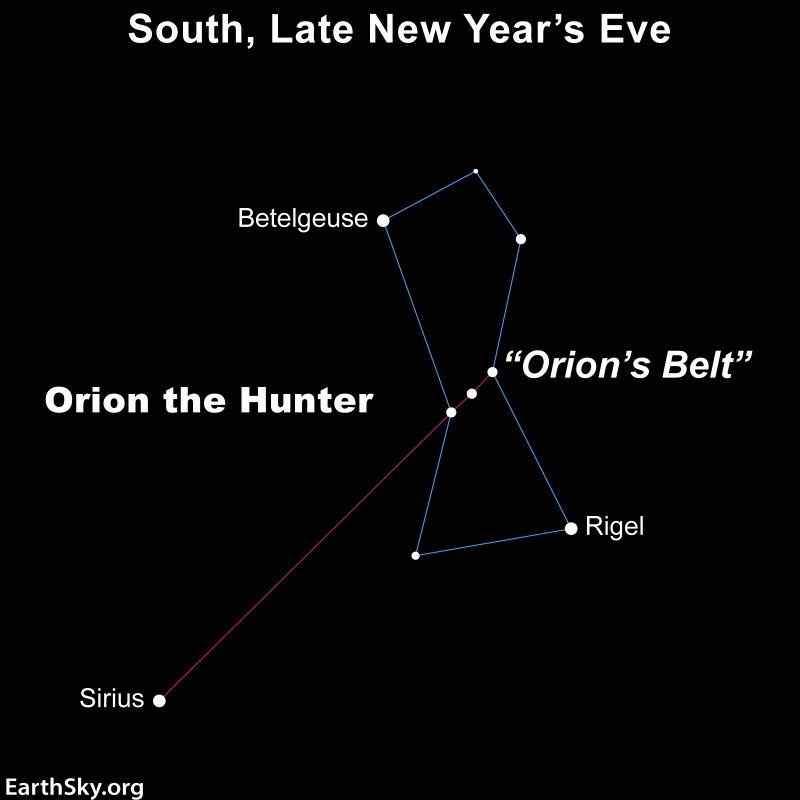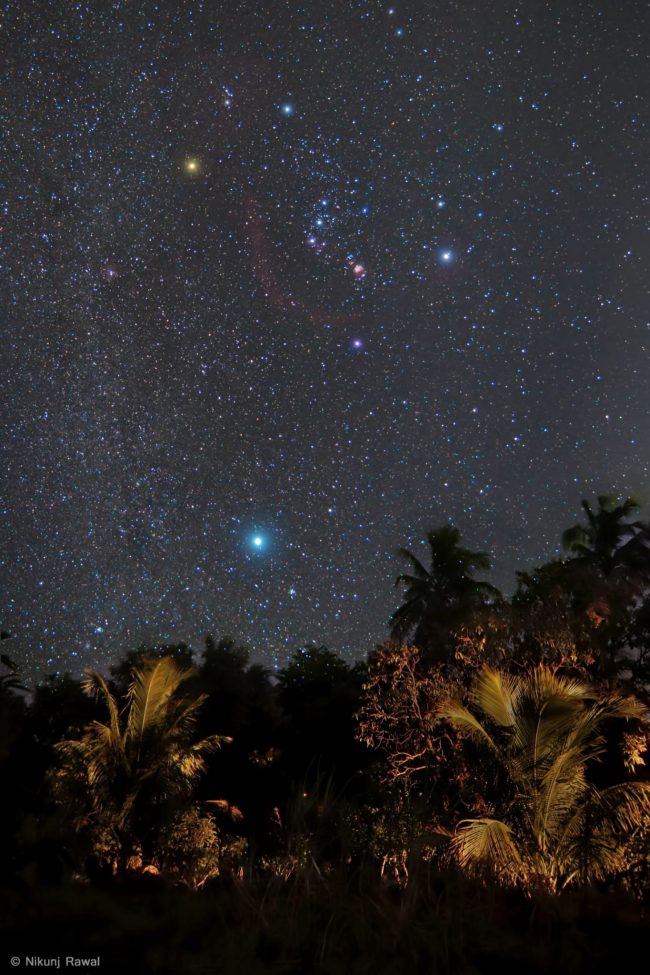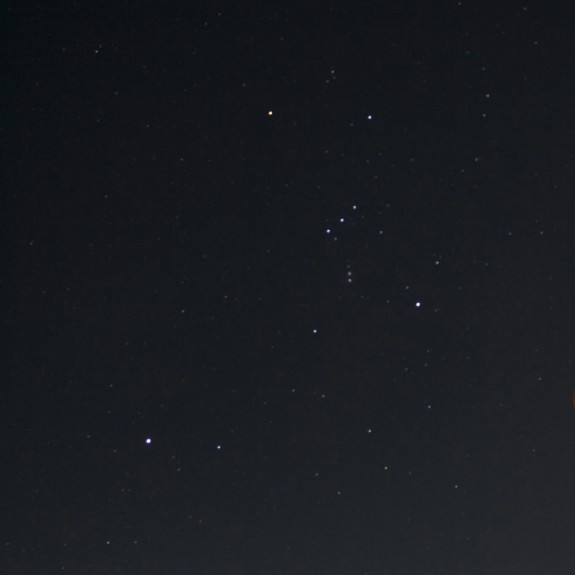
Want to entertain your friends on New Year’s Eve? Give them a quick tour of the heavens, and show them Sirius, the brightest star in the sky. It has the nickname the Dog Star, because it’s part of the constellation Canis Major the Greater Dog. Sirius might also be called the New Year’s star. It’ll ring in 2023 by reaching its highest point in the sky around the stroke of midnight. That’s true for every New Year’s Eve.

How to find the star Sirius
So how can you find Sirius? Well, for starters, it’s the brightest star in Earth’s night sky. In fact, its name means sparkling or scorching.
As a matter of fact, the only points of light that can shine brighter than Sirius are some of the planets. If you’re scanning the dark sky and aren’t sure which point of light is Sirius, here’s a sure-fire way to know. Look for the prominent Belt stars of the constellation Orion the Hunter. Because Orion’s Belt always points to Sirius, you can identify Sirius easily.

Sirius is up late for the party
So Sirius is highest in the sky at midnight every New Year’s. In short, astronomers call this a midnight culmination of Sirius. Thus, as the New Year rings in, Sirius is at its highest point in the sky.
To clarify, by midnight, we mean the middle of the night, that is, midway between sunset and sunrise. Like the sun, the stars rise in the east and travel westward across the sky. When the sun or any star is in the eastern half of the sky, it’s climbing upward or ascending. When the sun or any star is in the western sky, it’s descending downward. Therefore, midway between rising and setting, the sun or any star reaches its highest point in the sky.
Because the stars rise and set two hours earlier with each passing month, Sirius will be highest up for the night around 10 p.m. local time on February 1.

Bottom line: Look for the star Sirius at midnight culmination – highest in the sky around midnight, that is, midway between sunset and sunrise – every New Year’s Eve.
The post The star Sirius rings in the New Year first appeared on EarthSky.
from EarthSky https://ift.tt/M2cJU0s

Want to entertain your friends on New Year’s Eve? Give them a quick tour of the heavens, and show them Sirius, the brightest star in the sky. It has the nickname the Dog Star, because it’s part of the constellation Canis Major the Greater Dog. Sirius might also be called the New Year’s star. It’ll ring in 2023 by reaching its highest point in the sky around the stroke of midnight. That’s true for every New Year’s Eve.

How to find the star Sirius
So how can you find Sirius? Well, for starters, it’s the brightest star in Earth’s night sky. In fact, its name means sparkling or scorching.
As a matter of fact, the only points of light that can shine brighter than Sirius are some of the planets. If you’re scanning the dark sky and aren’t sure which point of light is Sirius, here’s a sure-fire way to know. Look for the prominent Belt stars of the constellation Orion the Hunter. Because Orion’s Belt always points to Sirius, you can identify Sirius easily.

Sirius is up late for the party
So Sirius is highest in the sky at midnight every New Year’s. In short, astronomers call this a midnight culmination of Sirius. Thus, as the New Year rings in, Sirius is at its highest point in the sky.
To clarify, by midnight, we mean the middle of the night, that is, midway between sunset and sunrise. Like the sun, the stars rise in the east and travel westward across the sky. When the sun or any star is in the eastern half of the sky, it’s climbing upward or ascending. When the sun or any star is in the western sky, it’s descending downward. Therefore, midway between rising and setting, the sun or any star reaches its highest point in the sky.
Because the stars rise and set two hours earlier with each passing month, Sirius will be highest up for the night around 10 p.m. local time on February 1.

Bottom line: Look for the star Sirius at midnight culmination – highest in the sky around midnight, that is, midway between sunset and sunrise – every New Year’s Eve.
The post The star Sirius rings in the New Year first appeared on EarthSky.
from EarthSky https://ift.tt/M2cJU0s

Aucun commentaire:
Enregistrer un commentaire